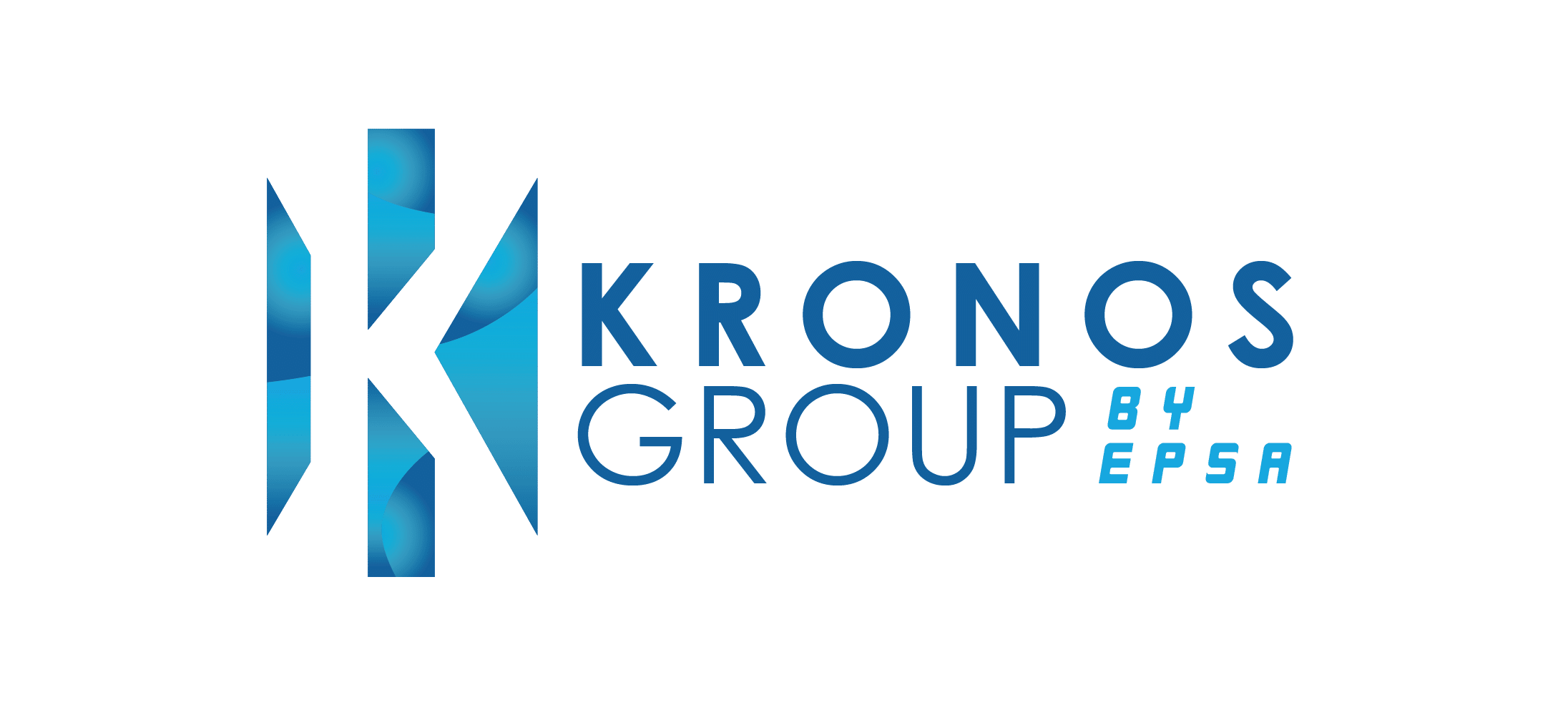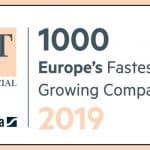How does digitalisation in procurement for the healthcare industry balance compliance and operational efficiency?

Summary
In the changing world of healthcare, it is very important to have efficient procurement processes. The current state of healthcare procurement is a complicated process. There are many steps involved and it frequently depends on old-fashioned paper systems. The challenges of healthcare procurement can take up to 45% of a hospital’s budget for running expenses.
Digitalisation in procurement can help healthcare organisations save around 30% on their procurement costs—proving its value to the industry. It has played a crucial role in helping the industry balance compliance and efficiency. Does procurement digitalisation enhance healthcare compliance and efficiency? Incorporating a perfect mix of digitalisation and consultancy can assist businesses in moving through their digital changes, making sure they follow regulations while improving procurement processes.
The forms of digitising procurement to achieve balance in compliance and operational efficiency include digital integration, training for staff members, and constant enhancement. Achieving a balance between compliance and efficiency with digitalisation improves patient care and operational processes by using technology along with professional guidance to simplify the purchasing process.
In today’s rapidly evolving healthcare landscape, efficient procurement is more critical than ever. A recent Deloitte report revealed that healthcare organisations can save up to 30% on procurement costs by adopting digital solutions. This significant potential for cost savings underscores the urgent need for healthcare providers to modernise their procurement processes.
Several healthcare organisations have successfully implemented digital procurement solutions, resulting in significant improvements. For example, a major hospital network in the United States reported a 25% reduction in procurement costs and a 50% decrease in order processing time after adopting an e-procurement system.
What is the current state of healthcare procurement?
Procurement is considered a daunting task in healthcare. It includes identifying needs, soliciting bids or proposals, assessing vendors, negotiating vendor agreements, and overseeing orders. However, the reliance on paper-based systems and disparate digital tools often leads to siloed information and fragmented procedures.
The goal is to find a balance between optimising productivity and complying with strict regulations. Manual documentation processes, lengthy approval procedures, and fragmented distribution channels are common obstacles that lead to inefficiency and increased operational expenses in healthcare procurement. According to the Healthcare Supply Chain Association, inadequate procurement methods can account for up to 45% of a hospital’s operational budget. These inefficiencies are exacerbated by the need to adhere to rigorous regulations, resulting in lengthy and costly procurement processes.
The acquisition of healthcare goods and services is dictated by regulations aimed at guaranteeing patient well-being and upholding procurement practices. Regulatory criteria include compliance with HIPAA and FDA standards, and meeting local laws.
Streamlining procurement processes to decrease expenses, mitigate errors, and hasten supply chain operations is crucial for operational efficiency. Procurement efficiency can result in advantages such as lowered costs, improved supplier connections, and enhanced patient outcomes. According to a study by McKinsey & Company, healthcare institutions with refined procurement procedures could potentially reduce supply chain expenditures by 15%, resulting in significant cost savings.
What are the challenges of healthcare procurement?
The inherent obstacles of traditional procurement practices in healthcare lead to high expenses, inefficiencies, and potential regulatory deviations.
Compliance burdens
Adhering to stringent regulations, such as HIPAA, FDA standards and local laws, is imperative for ensuring regulatory compliance in healthcare procurement. This includes meticulous documentation and strict adherence to detailed procedures. Regular audits and reporting are necessary to ensure compliance, which requires meticulous record-keeping and thorough process verification. However, relying on manual processes can result in mistakes and discrepancies, posing challenges in passing audits and avoiding financial penalties.
Inefficiencies
Manual processes in procurement, including data entry, order tracking, and supplier communication are at an elevated risk of errors, delays, and redundancies. Healthcare institutions often use manual and non-integrated methods for procurement management, leading to inefficiency and siloed data. This fragmentation makes it difficult to get a comprehensive perspective on expenditure and procurement practices.
High costs
Inadequate procurement practices can result in higher operational costs, inefficient inventory management, stock shortages, and excessive supply. Higher costs can be attributed to inefficiencies and manual processes, with up to 45% of a hospital’s operational budget being affected. Failure to comply with regulatory requirements can result in substantial financial penalties and legal expenses.
The need for a more streamlined, expedient, and compliant procurement procedure is apparent, with procurement digitalisation serving as the catalyst for process transformation.
Does digitalisation in procurement enhance healthcare compliance and efficiency?
Embracing procurement digitalisation and integrating systems is crucial for modernising healthcare procurement. They allow healthcare organisations to enhance compliance, streamline operations, and decrease costs, thereby leading to more efficient and effective procurement processes while addressing the burden of compliance, inefficiencies, and high expenses.
e-Procurement platforms
e-Procurement platforms transform the procurement process into a seamless and efficient operation, with features such as automated approvals, real-time tracking, and robust supplier management. According to a survey by Forrester, companies using e-procurement platforms report a 41% increase in procurement efficiency.
e-Procurement platforms can automatically update compliance requirements to ensure procurement activities remain current and compliant with standards.
Although e-procurement platforms streamline numerous components of the procurement process, they fall short of addressing various pivotal procurement obstacles. They frequently encounter difficulties with effortlessly integrating with outdated systems, resulting in data siloes and ineffectiveness.
These platforms may lack the versatility to adjust to distinct procurement necessities and intricate supplier connections that demand personalised administration. Additionally, e-procurement platforms are susceptible to cybersecurity hazards, risking data loss. They also heavily depend on precise data input, and inaccuracies or exclusions have the potential to undermine the entirety of the procurement procedure.
These platforms are unable to completely replace the intricate decision-making and strategic analysis offered by procurement experts, who possess valuable insight and judgment that automated systems cannot replicate.
Process automation
Process automation reduces manual tasks, such as data entry, order processing, and invoice handling, reducing human error and accelerating the procurement cycle. Automation can decrease procurement process costs by 30% and increase procurement efficiency by 60% as per a survey by McKinsey & Company.
The implementation of process automation, while capable of augmenting productivity and diminishing the burden of manual labour in procurement, neglects various imperative facets. It frequently lacks the proficiency to manage intricate decision-making and subtle discernment that seasoned procurement specialists offer.
Automated systems may encounter difficulties with deviations and unconventional situations, necessitating human insight and intuition. Furthermore, the efficacy of process automation is profoundly reliant on the calibre and precision of its input data; any flaws or disparities have the potential to cause considerable repercussions downstream.
Moreover, procurement automation is inadequate in managing the interconnected dynamics of procurement, including negotiating for terms and upholding crucial supplier connections. Ultimately, while automatons may optimise repetitive duties, they may not be suitable for swift alterations in market conditions or evolving regulatory environments, necessitating continual human monitoring and intervention.
Artificial Intelligence (AI)
AI is capable of forecasting demand, streamlining order processing, and enhancing inventory management. Its implementation can decrease procurement expenses by up to 20% and improve operational efficiency by 30%. AI-driven systems can continuously monitor procurement activities for compliance, flagging non-compliant orders to mitigate violations.
However, AI fails to replicate the nuanced decision-making capabilities of procurement professionals. Although AI is capable of analysing vast amounts of data and automating routine tasks, AI faces challenges in comprehending context-specific subtleties and adjusting to unforeseen changes that necessitate human intuition and expertise.
For example, the significance of long-term supplier relationships or the strategic implications behind procurement decisions may escape the notice of AI. Furthermore, the limitations imposed upon AI can be limited by the quality and scope of the data they are trained on, potentially leading to biased or suboptimal outcomes. Ultimately, ethical considerations and adherence to intricate regulations often demand human discernment to navigate areas where AI’s binary logic and lack of moral reasoning prove inadequate.
Blockchain
Blockchain provides assurance and protection in the supply chain by offering an unchangeable register to confirm the legitimacy of suppliers and merchandise, mitigating fraud and compliance risks.
Blockchain technology provides a reliable and unalterable record of procurement transactions, making audits and tracing the source of discrepancies effortless. Organisations adopting blockchain for audits have seen a 50% decrease in audit expenditures.
The potential of blockchain to revolutionise procurement through transparency and security is dampened by its failure to adequately address critical elements. Trust in initial data entry remains necessary, as the blockchain is vulnerable to inaccurate or fraudulent information. Implementations of blockchain technology can be demanding, requiring extensive computational capabilities and energy consumption that may prove costly and environmentally unsound.
Blockchain grapples with scalability challenges, encountering impediments and escalated expenses as the network expands. The fusion of blockchain into current procurement systems is intricate and demands substantial resources for infrastructure and instruction. Blockchain innovation lacks autonomous capability in guaranteeing adherence to regulations stipulations, necessitating human oversight and intervention.
Data analytics
Data analytics enables effective decision-making by analysing expenditure trends, supplier effectiveness, and industry movements. A study by Deloitte found that companies using data analytics in procurement achieve a 10-20% reduction in spending.
Although data analytics possesses considerable capabilities in revealing valuable insights and patterns concerning procurement, it falls short of addressing crucial procurement process components. It cannot frequently capture qualitative influences and contextual considerations that greatly impact procurement choices, such as supplier reliability or strategic alliances. Notably dependent on data availability and accuracy, any deficiencies or errors may result in erroneous conclusions and judgments.
Furthermore, it grapples with the challenge of anticipating and executing unforeseeable occurrences, such as abrupt market disruptions or geopolitical transformations, necessitating intuition and flexible cognition.
How to achieve a balance between compliance and efficiency with digitalisation in procurement
Healthcare organisations need to strike a balance between healthcare compliance and procurement efficiency to deliver exceptional patient care and maintain sustainable operations. Adhering to rigorous regulations, standards, and ethical principles through compliance is imperative for ensuring both patient safety and organisational integrity.
However, solely focusing on compliance can result in unwieldy procedures that impede efficiency, cause procurement delays, and escalate overheads. To achieve a harmonious balance between these two essential considerations, a calculated strategy is necessary, one that capitalises on cutting-edge technologies, strengthens the integration of processes, and fosters a culture of continuous improvement. This approach empowers healthcare organisations to ensure they meet regulatory requirements without compromising on the speed and effectiveness of their procurement operations.
- Integration with existing systems
Business tools are constantly evolving and updating, thus it is important to ensure that new digital tools seamlessly integrate with existing healthcare management systems.
- Staff training
It is important to invest in comprehensive training programs to ensure that procurement staff are proficient and familiar with using constantly evolving digital tools to uphold service quality and foster trust and adaptability.
- Continuous improvement
Fostering a culture of continuous improvement enables adaptation to evolving technologies and regulatory requirements.
- Overcoming challenges
Addressing potential hurdles such as resistance to change and initial setup costs can be done by demonstrating the long-term benefits and ROI of digital procurement solutions.
When it comes to achieving this intricate balance, procurement consulting can play a crucial role. Procurement consultants, with their experience and expertise, can handle the complexities of procurement in healthcare—understanding the need for regulatory compliance, industry best practices and new technologies. This assists in formulating solutions that match standards of both compliance and efficiency.
Most often to find a balance in digitalisation, procurement consultants make use of digital maturity assessments. This is done to evaluate the present state of digital capabilities within the healthcare organisation, uncovering inadequacies and opportunities for enhancement.
Elevate your healthcare procurement function with a balance of compliance and operational efficiency
Consulting a procurement expert for digitising procurement processes is a strategic decision that can yield significant benefits for organisations. By leveraging the expertise of procurement consultants, businesses can navigate the complexities of transformation by assessing their digital maturity.
Ultimately, this partnership empowers healthcare organisations to streamline procurement operations, enhance efficiency, reduce costs, ensure compliance, and stay ahead in an increasingly digital business landscape.



